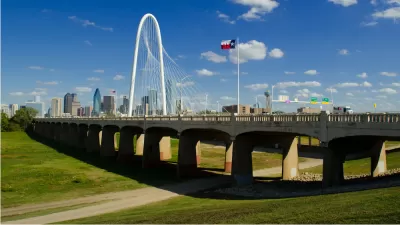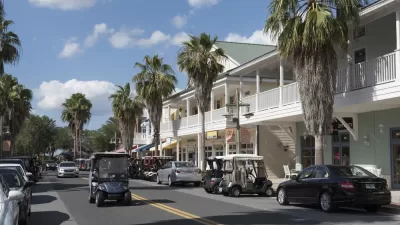Joel Kotkin and Alan M. Berger discuss their new book, which analyses what the suburbs are and will become, in both the United States and around the world.

A new book, Infinite Suburbia, edited by Joel Kotkin and Alan M. Berger, looks at suburbia from a variety of perspectives. At more than 700 pages, it is a collection of essays from the perspectives of architecture, planning, history, and transportation, to name a few. The Architect's Newspaper interviewed Kotkin and Berger about it.
In the interview, Kotkin is quoted:
"Two trends that may seem counterintuitive to urbanists have been the rapid pattern of diversification in suburbs, which now hold most of the nation’s immigrants and minorities, as well as the fact that suburbs are more egalitarian and less divided by class than core cities."
Kotkin and Berger point out that suburbs are not just diversifying, but that many U.S. central cities exhibit suburban land use patterns. Conversely, many cities around the world have suburbs with housing that is primarily multifamily and dense, a far cry from the transitional American single-family home and manicured lawn.
They point out that the future of suburbs will continue to be denser, but also more environmentally friendly. Suburbanites will demand fewer golf courses in the future and more public trails and common landscapes. They also believe autonomous cars will transform suburbia, and take strain off of transit systems so they can focus on improving service in urban cores rather than expanding outward in less efficient ways.
FULL STORY: What if Everything You Know About the Suburbs is Wrong?

Study: Maui’s Plan to Convert Vacation Rentals to Long-Term Housing Could Cause Nearly $1 Billion Economic Loss
The plan would reduce visitor accommodation by 25,% resulting in 1,900 jobs lost.

North Texas Transit Leaders Tout Benefits of TOD for Growing Region
At a summit focused on transit-oriented development, policymakers discussed how North Texas’ expanded light rail system can serve as a tool for economic growth.

Why Should We Subsidize Public Transportation?
Many public transit agencies face financial stress due to rising costs, declining fare revenue, and declining subsidies. Transit advocates must provide a strong business case for increasing public transit funding.

How to Make US Trains Faster
Changes to boarding platforms and a switch to electric trains could improve U.S. passenger rail service without the added cost of high-speed rail.

Columbia’s Revitalized ‘Loop’ Is a Hub for Local Entrepreneurs
A focus on small businesses is helping a commercial corridor in Columbia, Missouri thrive.

Invasive Insect Threatens Minnesota’s Ash Forests
The Emerald Ash Borer is a rapidly spreading invasive pest threatening Minnesota’s ash trees, and homeowners are encouraged to plant diverse replacement species, avoid moving ash firewood, and monitor for signs of infestation.
Urban Design for Planners 1: Software Tools
This six-course series explores essential urban design concepts using open source software and equips planners with the tools they need to participate fully in the urban design process.
Planning for Universal Design
Learn the tools for implementing Universal Design in planning regulations.
Ascent Environmental
Borough of Carlisle
Institute for Housing and Urban Development Studies (IHS)
City of Grandview
Harvard GSD Executive Education
Toledo-Lucas County Plan Commissions
Salt Lake City
NYU Wagner Graduate School of Public Service





























